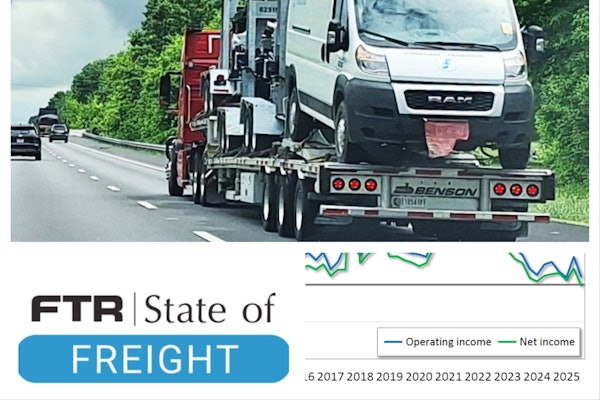Knowing cost and income performance per unit of time worked, tracking it closely and making adjustments, is important for all owner-operators. As fast as cost inputs and freight rates change, can you afford not to know your estimated profit and loss on every load before you go? The cost of your time is a big part of that.
Traditionally, most owner-operators haven't been in the habit of setting a salary for themselves as drivers, yet separating your own driver pay from the business profit or loss could be helpful in better consideration of time's value. This can be mentally challenging when you drive for yourself. Yet making yourself, or just thinking about yourself as, the W2 employee with a set compensation could benefit you, now and in the future. After all, if you decide to set up the business as an S Corp -- or to expand with another truck and hire a driver -- you'll be forced into this kind of system anyway.
When asking what you are worth as a driver, take note of current pay rates for company drivers. You also cannot ignore employee benefits in this day and age. As a baseline for your own calculations, do you know what a company driver is earning? Compensation ranges widely, yet $70K annually is getting more common.

Evaluate your pay and profit in comparison. With the challenging conditions of the recent past, ATBS reported truck owner net income was mostly flat from July 2023 through June 2024, down just 0.2% to $63,000 on average. How do you think you compared to that?
The pressure to cover monthly fixed costs (truck payment, insurance, and other regular expenses) as an owner-operator can become an emotional force for many, dictating when you work and what loads you select to haul. Recent ATBS reporting showed fixed costs up 3% year-over-year to $56,296 on average from July 2023 to June 2024.
At once, everyone should ask themselves: Am I choosing loads just for a big chunk of revenue to make a payment? Or am I choosing loads for a reasonable profit? (See more on how to effectively self-dispatch here.)
That’s the other big and pesky question here related to time’s worth. Research found profit margins (profit as a percent of total revenue) between 7% and 19% for trucking companies broadly speaking. This would suggest a sound profit goal for the average owner could be 10% of your 1099, or 10% of the sum of your 1099s, yet only after you’ve paid yourself. So if your 1099 showed $180,000 gross last year, a good profit goal might be $18,000 -- after your salary and benefits. Plenty owners do better than that, though the percentage depends a lot on what you pay yourself as a driver.
It’s also still important to measure your per-hour costs. Work hours vary day to day, but the time you put in compared against fixed and variable expenses can be a powerful metric to analyze to determine, for example, when that customer who’s got a huge detention problem at its docks is no longer worth the time and effort to maintain a relationship with.
Tracking variable expenses (fuel, tires, etc.) separately from fixed costs is important in determining the worth of loads and making decisions. Armed with your own numbers on those costs, you can determine what it will cost to haul a given load. Check the following as an example for a single load:
Variable cost: 1,550 miles at $0.75/mile total variable cost = $1,162.50
Fixed cost: 2.5 days invested at a daily fixed cost of $383.00 = $957.50. (That daily cost includes $275 worth of daily salary to the owner.)
Total cost: $2,120, or $1.37/mile
Rate paid to the truck: $3,220, or $2.08/mile for all miles
Profit: $1,100 or 34.16% of revenue
Profit plus salary (at $275 daily for those 2.5 days): $1,787.50
Profit plus salary per day: $715.00
[Related: Evaluate earning potential with Overdrive's Load Profit Analyzer]
All those are worthy calculations, but when it comes to actual hours worked, two and a half days can vary quite considerably in trucking, depending on so many factors. In this case, actual hours spent either driving or on-duty over those 2.5 days totaled 28.75 hours. Knowing that, here’s what the operator’s time was worth, and what it cost per hour to generate that worth, concretely and succinctly:
$73.74 per hour in cost
$38.26 per hour in profit
$23.91 per hour driver pay (based on the operator’s self-pay salary)
Find more examples in the following edition of the Overdrive Radio podcast walking through our Load Profit Analyzer tool, which simplifies calculation of costs costs using a per-day/quarter-day standard:
Read next: Calculate any load's cost in relation to time, not just miles









